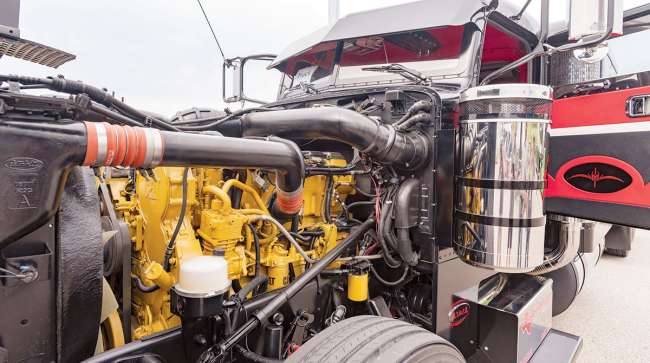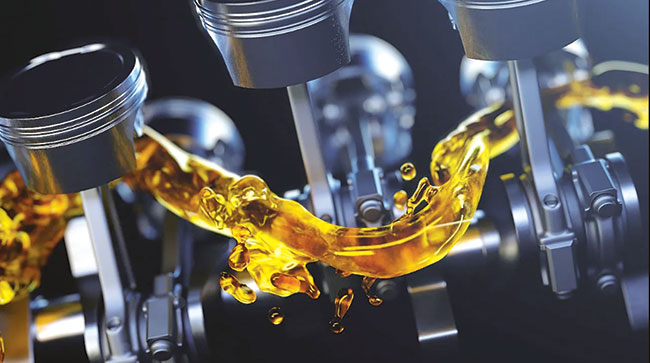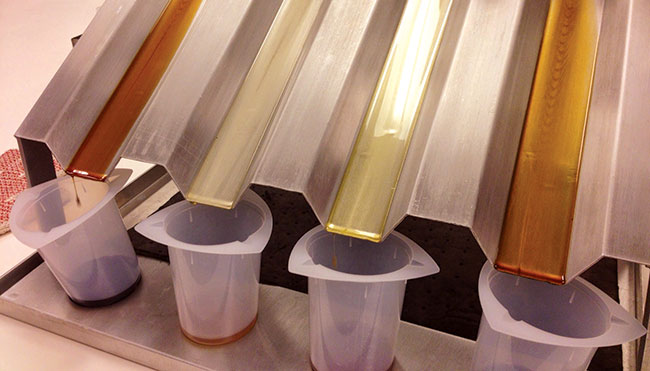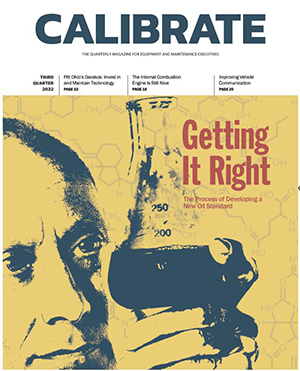Contributing Writer
Getting It Right: Developing New Oil Standards

[Find the latest in equipment & maintenance: Explore this quarter's issue of Calibrate]
The saying “Time flies when you’re having fun” could likely apply to developing new engine oils. And some time has passed since the last diesel engine oil category was introduced in 2017 when the American Petroleum Institute (API) announced CK-4 and FA-4.
These updated oil standards were, at the time, based on data going back as far as CJ-4 (2006). Fast-forward to today, and another turning point in oil development has been reached. With increasing environmental concerns and high fuel prices, trucking companies and manufacturers are walking a tightrope toward the future.
“The engine manufacturers association (EMA) came to API and asked for a category upgrade that will allow them to comply with the new EPA regulations coming in 2027,” said Karin Haumann, OEM technical manager for Shell Lubricant Solutions, explaining the category development process. “There are some hardware strategies that the engine manufacturers need to employ to be able to meet those [2027] targets. And part of that is the performance of the oil.”
More Q3 Calibrate
►Cameras on Windshield Remain FMCSA-Compliant
►Five Questions: Taki Darakos, Pitt Ohio
►Freeze: Trust the Innovation Process
►TMC Corner: Carriers Challenged to Take Action
►Baxter: Internal Combustion Engine's Demise May Be Greatly Exaggerated
Explore the Issue!
In March 2021, truck manufacturers and EMA formally asked for the development of a new diesel engine oil category identified as Proposed Category 12 (PC-12), noted Dennis Bachelder, API’s senior engineer.
“Within months, the American Petroleum Institute established the New Category Evaluation Team (NCET) to evaluate the request and need for PC-12,” he said. “After six months of review, in December 2021, the API established a New Category Development Team (NCDT) to begin the test development phase of PC-12.” This new category will replace the current API CK-4 and FA-4 engine oils in 2027.
Developing a new engine oil category is no easy task. Many variables and multiple stakeholders are involved, including the Environmental Protection Agency, California Air Resources Board, EMA, API and others. And sometimes, these groups have significant differences that can lead to lawsuits, such as the case with EMA and CARB. EMA recently filed a lawsuit against CARB, stating that it needs more lead time to implement new technologies that meet CARB’s latest emissions requirements.
Lead Time
EMA President Jed R. Mandel said in a statement about the lawsuit last month that Congress tacitly agreed to give manufacturers enough time to develop and produce products to meet new emissions standards when they enacted the Clean Air Act in the first place.
“The highly diversified and low-volume commercial engine and vehicle manufacturing industry must design multiple new engine and exhaust after-treatment technologies, conduct extensive testing to ensure long-term durability, integrate the new systems into extensive distinct vehicle chassis, and assure customers that the new products will meet their needs through real-world demonstrations,” said Mandel. “In the Clean Air Act, Congress determined that four full model years is the minimum amount of time manufacturers needed to complete the product design and development process, and in 1986 the U.S. Court of Appeals for the District of Columbia Circuit reaffirmed Congress’ intent.”
Ostensibly, this lead time is necessary to achieve real-world results that will please all parties and comply with more stringent emissions regulations set by either EPA or CARB. And this factors into the development of a new oil category as well. It takes time to get all the parties to the table and in agreement with the new standards and tests necessary to reach the overall objectives.

Earlier this year, truck manufacturers and EMA formally asked for the development of a new diesel engine oil category, Proposed Category 12 (PC-12). (Shell via Facebook)
Engine oils are designed to lubricate and protect engine parts such as the bearings, camshaft, piston rings and liner, especially under high shear conditions at high operating temperatures. The viscosity (resistance to flow) of engine oil at elevated temperatures under constant shear, simulating the narrow tolerances and high speeds between moving parts in a hot engine, is difficult to measure without good data such as high-temperature high-shear (HTHS). The lower the measured torque in a 300-degree Fahrenheit engine, the lower the HTHS viscosity of the oil and the higher the fuel efficiency.
Development Team
The NCDT was formed to look at all necessary steps. Those areas include increased oxidation control; new engine wear test capability to replace older, retiring engine tests; new lower oil viscosities as low as SAE 0W-20 in the F category; improved emission control system protection; and new engine elastomer seal compatibility.
As with PC-11, the new oil will include two subcategories to accommodate older engines and optimize fuel efficiency in newer engines. API’s Bachelder explains that the current C category will be expanded to maintain its “backward compatibility” for on- and off-road applications. The new F category will be expanded to replace FA-4 for on-road applications and “does not have backward compatibility” with older engines not designed for lower viscosity oils.
Bachelder adds that this two-path strategy will refine the differences between the C and F category oils. “NCDT is anticipating future EPA regulations as guidance on developing the F subcategory diesel engine oils designed to meet the needs of newer diesel engine technologies.”
Emissions Factor
While some of the factors are known, Shell’s Haumann says that emissions thresholds have not been decided yet. “The EPA still has until the end of the year to make the final decision, and we’re still waiting on the final emission targets,” she said. “The EPA looks at the total amount of emissions, and they also look at service intervals for emissions equipment.”
“I think the EPA has got till the end of the year. We’re still kind of waiting on that,” she said. “But they look at the total amount of emissions, and they also look at service intervals for emissions equipment.”
Haumann noted that the pressure rating used for determining viscosity will be a lower limit than is currently used for FA-4. Currently, FA-4 oils are blended to an HTHS viscosity range of 2.9cP-3.2cP to reduce emissions. These oils are especially effective at sustaining emission control systems that use particulate filters and other advanced after-treatment systems. Thus most likely, the lower threshold will be more compatible with these systems.

The new oil category, PC-12, will include two subcategories to accommodate older engines and optimize fuel efficiency in newer engines. (Shell)
The challenge with hitting the lower viscosity limit is maintaining an oil film that doesn’t break apart and create carbon deposits or hot spots in the cylinder while also having enough wear protection to prevent metal-to-metal contact. Haumann says reaching the right balance requires working with engine manufacturers to test the performance.
Engine Tests
“We have engine wear tests that we’ll have to pass to show that with a thinner oil film, we can still provide wear protection,” Haumann said. “Another part of that does have to do with the hardware design. Maybe not as much for oil film thickness as for even oil pressure. There are some design issues around the pumpability differences on a lower viscosity oil.”
Creating an effective oil product requires a combination of oil chemistry and anti-wear additives that lay down a sacrificial layer on the hard parts that prevent metal-to-metal contact. “That’s the additive technology,” Haumann explained. “That looks different depending on the viscosity, but there are also hardware considerations whether the engine is suitable for a low-viscosity oil.”
The NCDT is tasked with combing through data and engine tests to decide what needs updating and what can stay the same. “We do have some different tests,” Haumann said, noting the new category is needed because some of the tests are becoming obsolete.
“We’re getting to the end of the hardware availability for the Mack T-11 and Mack T-12. The T-11 is a soot handling test, and the T-12 is a ring and liner wear test,” she said.
Haumann described two new wear tests: the Ford 6.7L valvetrain wear test and the introduction of the Detroit DD-13 scuffing test, which was looked at for PC-11 but was not included.
“The timing didn’t coincide with the test development, but now that test has been implemented, and in place, so we’re going to look at adding that scuffing test to PC 12,” she said.
Tied closely to the objectives of PC-12 is its ability to control exhaust emissions. API’s Bachelder says that diesel oils can do this in multiple ways, including with:
- Low SAPS (Sulfated Ash, Phosphorus and Sulfur) engine oil formulation to reduce ash deposits, minimize sulfur emissions, and maintain NOx catalyst efficiency
- Oil oxidation resistance keeps the viscosity under control to maximize lubrication and minimize wear.
- Lowering the SAE Viscosity Grade to increase fuel economy by limiting energy loss from fluid friction. Engines designed to use SAE 0W-20 viscosity is an example of fuel efficiency from low viscosity engine oils.
Haumann explained that the Caterpillar aeration test will be carried over from PC-11 as well as the Volvo T-13 test with some adjustments.
“It was new for PC-11. We also have an oxidation test. The Volvo T-13 test will be carried over, although we are looking at increasing the performance limit for oxidation as part of the category upgrade.”
She confirmed that the tests provide some flexibility to the engine manufacturers to operate at higher temperatures, which allows them to manage viscosity, or they could use that additional performance to extend oil drain intervals. “It just depends on the strategy of the engine manufacturer and how they want to utilize that additional oxidation stability,” Haumann noted.
Low Viscosity
Shell is working closely with engine manufacturers to improve the performance of the oil in a way that will allow them to improve fuel economy with lower HTHS viscosity, but it depends on what they prioritize.
“Lower viscosity oils can gain the fuel economy with oxidation and oil drain intervals set by the engine manufacturer. All the oil will have a minimum performance requirement for oxidation stability, which is the big driver behind oil drain intervals. And whichever way the engine manufacturer utilizes that performance, I don’t see drain intervals being reduced,” Haumann said. “But they may not necessarily be expanded either, depending on how the engine manufacturers end up doing their design. With better oxidation stability, you can either increase your oil drain intervals or run at higher temperatures (and better fuel economy). But typically, you can’t do both.”
According to Bachelder, the NCDT will manage the development timeline to meet the target 2027 introduction of PC-12. However, he says there are always unexpected, unplanned issues and delays even with the best engineering and test plans.
“It is possible this may happen with PC-12. If it does, the NCDT will work to resolve the issue and minimize the delay in the 2027 introduction of PC-12.”
Want more news? Listen to today's daily briefing below or go here for more info:





